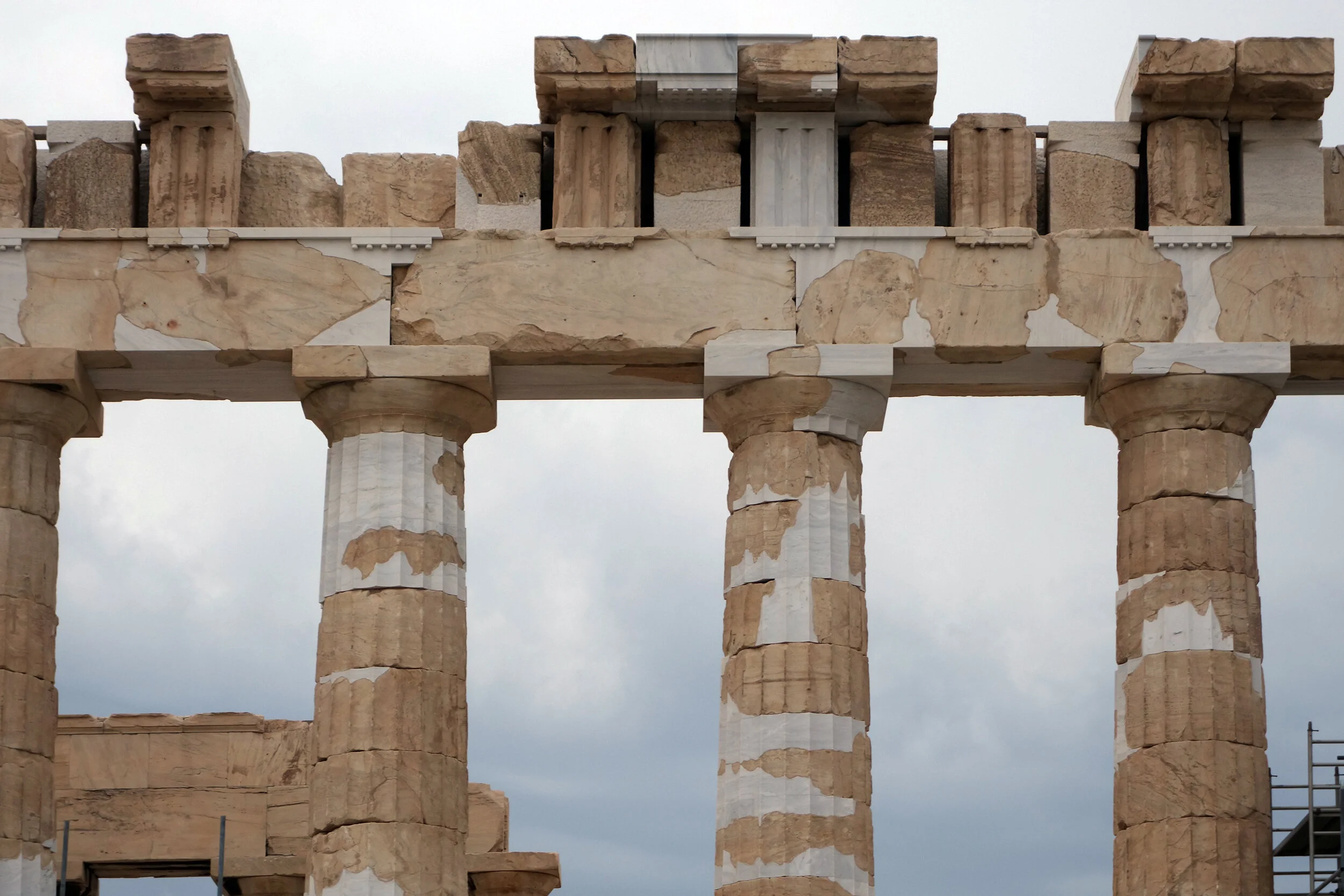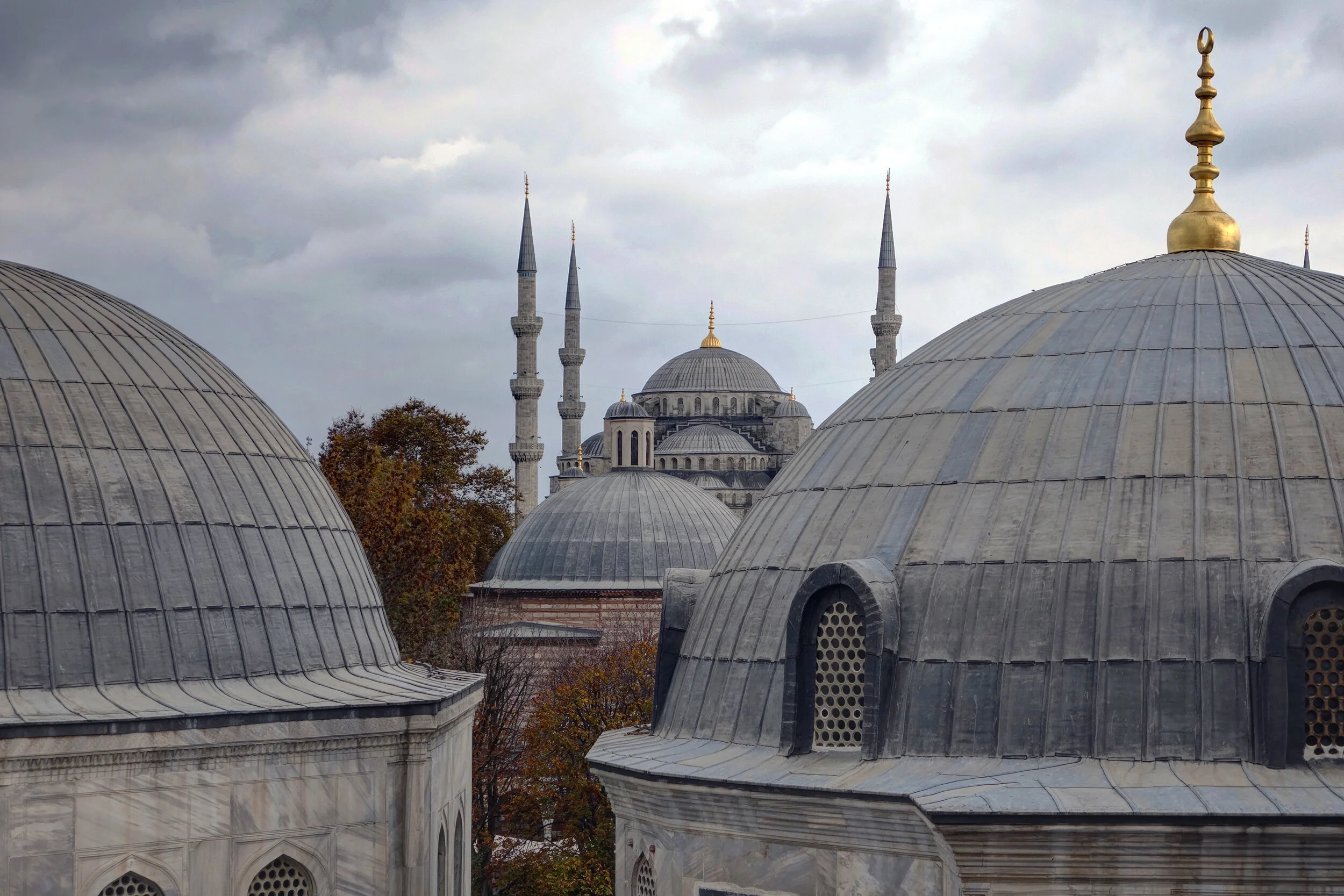
Page 9 of 11
Athens, Greece
I see all of my dreams ragged and torn
After all of those stops in Asia, the rest of my trip (and the rest of the slideshow) concentrates on three destinations in Europe. The first one is Athens, the birthplace of democracy and possibly gyros.
The center of the city is the Acropolis, a place where we are still appreciating design decisions made 2,500 years ago. This is the first view that you get after you clear your way through the Propylea- on the left is the Erechtheum, on the right is the Parthenon and up above are some pretty angry clouds. As I stood atop the Acropolis you could hear increasingly loud and increasingly closer thunder. It was nice to imagine that my arrival had somehow pissed off Zeus himself, but not quite as nice to think about how I was standing atop the center of Athens unprotected from an errant (or possibly intentional) lightning bolt. Luckily I survived (it rained but the thunder dissipated), living to fight Zeus yet another day.
The rain made an empty Acropolis even emptier, but had a foreseeable consequence. Much of the walk back to my hotel past Monastiraki consisted of steep downhill sidewalks and stairs, all made of beautiful weathered stone that became exceedingly treacherous when wet. I survived unscathed but did see a few other people go down on the all too slippery stone. Maybe that bastard Zeus had the last laugh after all.
This is a close up of the second most famous part of the Acropolis. The small porch of the Erechtheum has the famous Caryatids, women with column capitals for hats trapped for eternity in a stare down with what's left of the still more popular Parthenon.
Even with all that distant thunder from a pissed off Zeus, the Parthenon is one of those special places that is hard to describe unless you’ve been there, and even then it’s not that easy. I love the Roman Forum, but its so ruined and crushed by the surrounding city that its soul is harder to really feel. Here at the Acropolis, on top of the mountain, separated by the city and standing on land long exalted, there is nothing but soul in every stone and every remaining ruin.
You can see the Caryatids in context all you want atop the Acropolis, but the truth is that they're fake. They are replicas of the real Caryatids that stand in silence inside Bernard Tschumi's wonderful new Acropolis Museum. The collection there (where photography is generally prohibited) is shocking and amazing in its quality, but it is also not without its own fake replica problems. On the top floor (where photography is ok) is a continuous gallery where pieces of the Parthenon sculptures are displayed with a view back to the Acropolis. Unfortunately a lot of these (but not all) are fake since the British Museum refuses to return the original stolen sculptures. It all becomes an exercise in confusion. Real sculptures aside fake sculptures in a building within view of the real buildings adorned with fake sculptures.
Just like Jerusalem is a real city and more than just an archeological theme park, so is Athens. And to prove that, we'll finish up our slideshow-within-a-slideshow of street art here in Athens.
So what have we learned in this slideshow-within-a-slideshow? To start, we learned than that Australians are happy enough to produce fun and whimsical street art, that the graffiti in Dubai may indicate the presence of an oppressed state crushing a terrified and possibly secretly rebellious populace, that someone in Jerusalem likes to draw the talking baby from Family Guy and that here in Athens, that pink blocky guy who kind of looks like a mailbox says "continue" in Greek, unless my translator app is wrong. So, to summarize, we basically learned nothing.
As with many destinations this trip, my time in Athens was limited. Three and a half weeks sounds like a long time until you start to break it down. But with what little time I had, I still was able to take the Athens Metro north of the city center and head out to the Olympic Park where nine years ago the world gathered in peace and love (peace and love). The nine years since then have apparently been pretty rough. The park is vast, empty, abandoned, marred by graffiti and starting to fall apart. When I was there, I did see three or four other people wandering the site but generally had it all to myself. My own private post apocalyptic Olympic Park, the perfect location to film a movie about a dystopian future where something once so important was now an afterthought at best.
The Olympic Park and Olympic Stadium were designed by Santiago Calatrava, and its downfall is likely no fault of his own. Nine years of deferred maintenance and a bankrupt government probably have something to do with it. Or maybe Greece was just quickly trying to turn their white city into a collection of ruins, something which has been drawing crowds to the Acropolis for a few millennia now.

